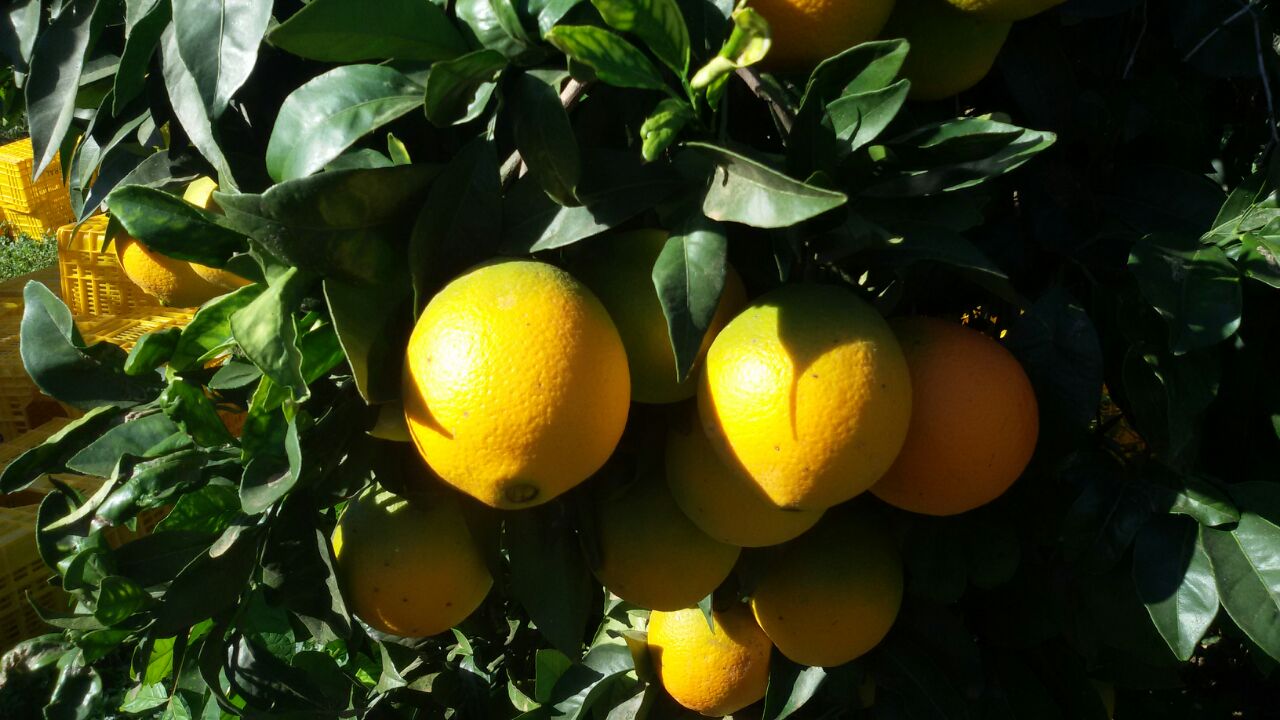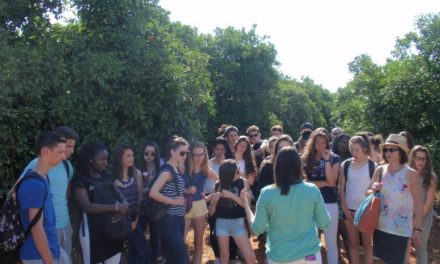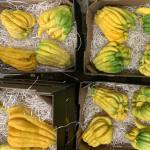Orange Navelina is an early ripening, seedless variety. High yielding tree with medium-large, oval fruit (Pear shape). Fruit is deep orange with good, juicy, sweet flavour and smooth rind.
Description / Taste
Navelina oranges are medium or medium-large sized and pear shaped. They have small navels, from which they get their name, and which are actually tiny, undeveloped fruits. The thin red-orange, mostly smooth rind hides deep orange flesh that is relatively juicy, sweet, and seedless.
The fruit have very smooth rind and have reddish orange rind color at maturity. The fruit mature very early and are juicy with a sweet flavor that is less sprightly than Washington navel.
Seasons / Availability
The Navelina orange is available from winter into early spring.
Current Facts
Navelina oranges are a type of sweet orange related to the more common Navel variety. Navelina refers to the small navel on one end, which looks similar to a human navel. Their botanical name is Citrus sinensis ‘Navelina’. Other names include Washington Early and Dalmau (in Portugal). Commercial production is primarily centered Seville and Valencia, Spain; they are also grown in other Mediterranean regions.

Organic Navelina Oranges located in Gospa Citrus Farm, Seville, Spain.
Nutritional Value
Oranges, including the Navelina, are high in Vitamin C and low in most other nutrients and calories. The health benefits of oranges include strengthening the immune system and promoting heart health.
Applications
Navel oranges are particularly good for fresh eating because they are easy to peel and are seedless. To use them in prepared dishes, add them to salads, desserts, and savory recipes, or just use them as a garnish. The skin can be candied, made into marmalade, or used as zest for flavoring, while the juice is delicious as is or as part of a citrus drink such as lemonade. Store oranges either in the refrigerator or at room temperature for a maximum of two weeks. Keep them stored loose rather than the plastic bags they sometimes are packed in to prevent mold.
Ethnic / Cultural Info
Oranges are an important part of the culture and economy of southern Spain. Navelina oranges, along with other varieties, are primarily grown in this country, which is the world’s largest orange supplier. Over 740,000 acres of Spanish land produced 2.64 million tons of oranges in 2011, which were shipped worldwide.

Big Organic Navelina Oranges from Gospa Citrus Farm, Seville, Spain, with Antonio, new generation in the Gospa Citrus family.
Geography / History
Oranges and other citrus first grew around 4000 B.C.E. or before in Southeast Asia, resulting from a cross between the pomelo, kaffir, mandarine and citron. Today, many varieties of oranges grow in subtropical regions all over the world; the Navelina orange is one of them. The Navelina was originally known as Smith’s Early Navel when it was discovered in California. It did not arrive to Spain until 1933, when the University of California supplied it to the Valencian Institute of Agrarian Research, IVIA, where it was given the name ‘Navelina’.
Nutritional facts
| Calories | 45 |
| Carbohydrates (g) | 115 |
| Fiber (g) | 2,1 |
| Potassium (mg) | 190 |
| Magnesium (mg) | 8 |
| Provitamin A (mcg) | 21 |
| Vitamin C (mg) | 3 |
| Vitamin E (mg) | 0,7 |

Harvest time for the organic Navelina Oranges in Gospa Citrus Farm, Seville, Spain, from November to January.










